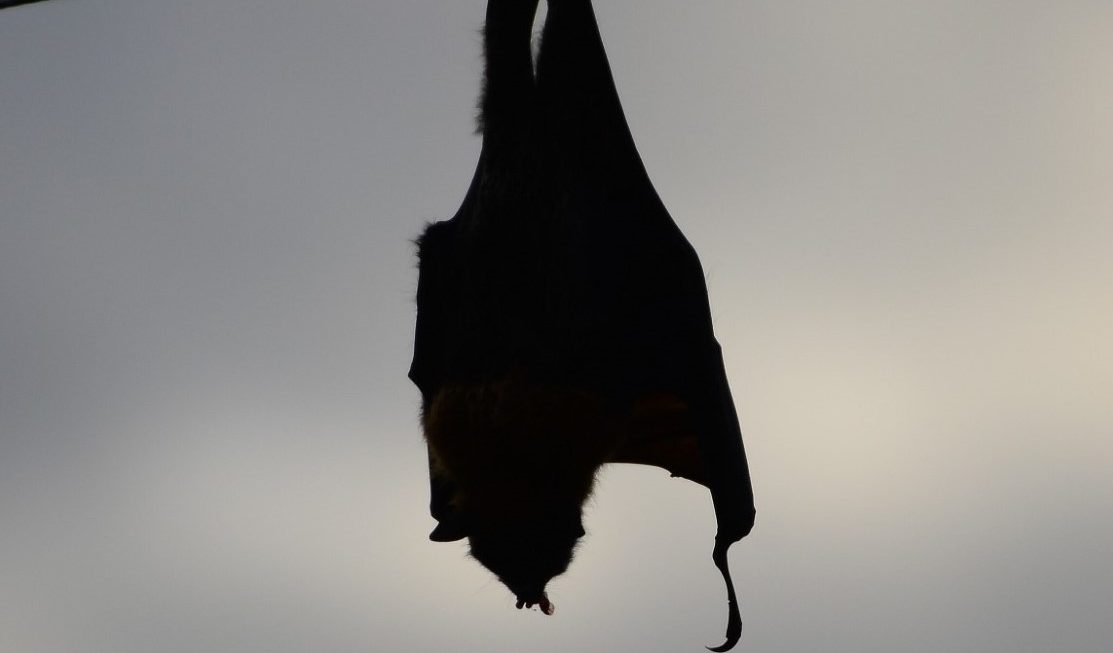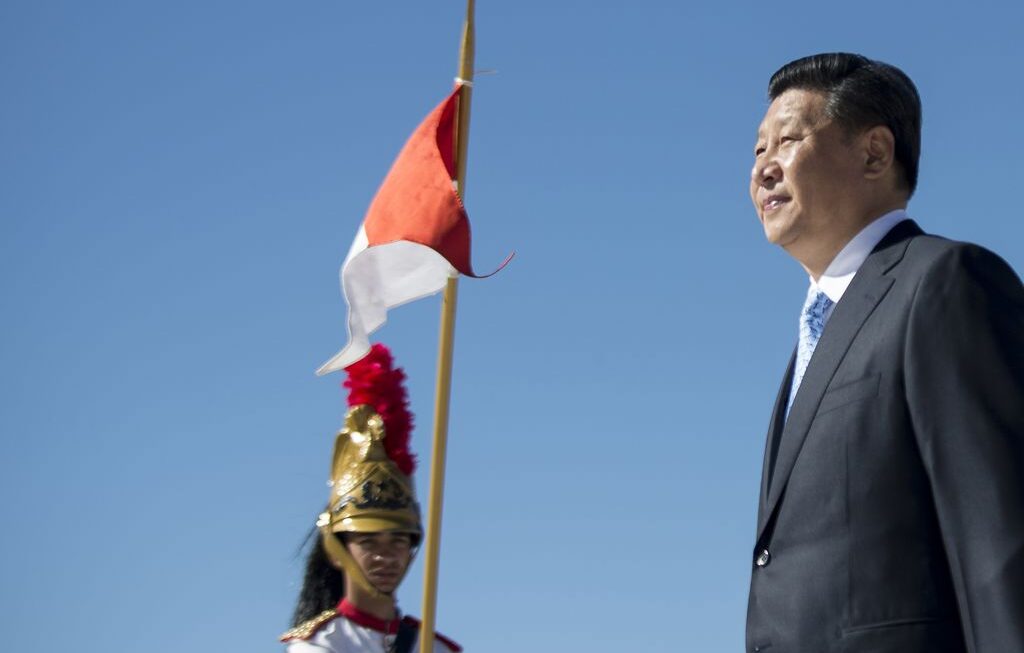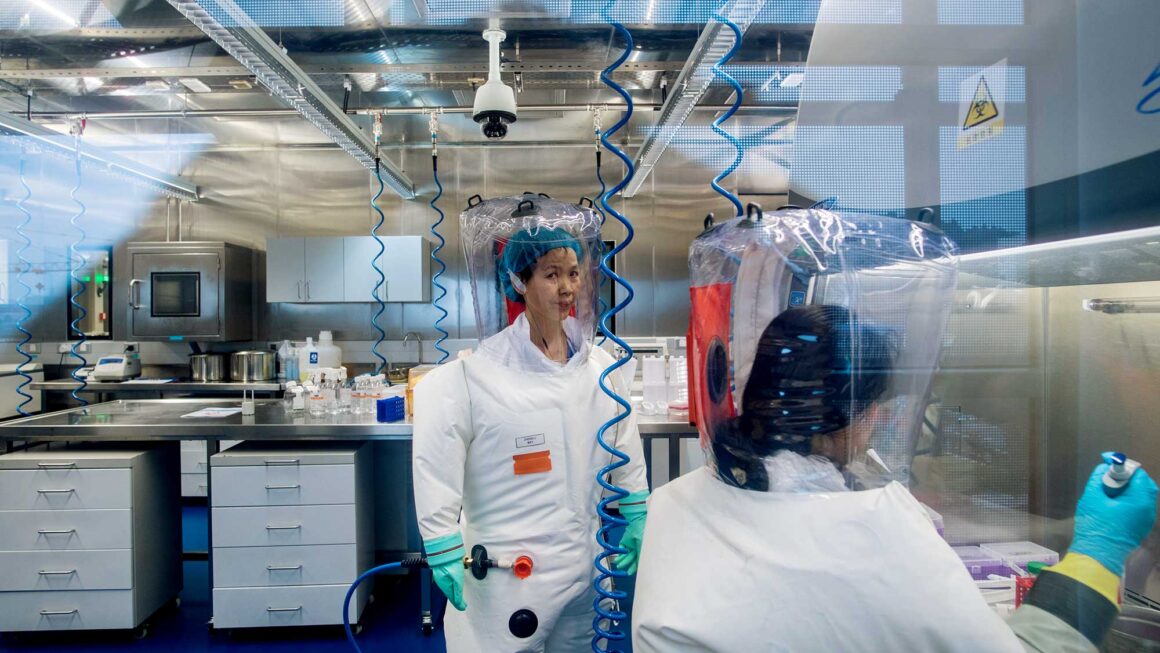Nine miles from the Huanan seafood market in Wuhan, a cluster of nondescript buildings sits at the forested edge of the city. This is the Wuhan Institute of Virology, and it houses China’s only biosafety level 4 lab studying human infectious diseases. Since the beginning of the year a conspiracy theory has been quietly simmering away and refusing to die – the theory that SARS-CoV-2 (the coronavirus causing the disease COVID-19) was created here. International media has largely dismissed the idea. While the Chinese authorities have launched a number of their own counter-conspiracy theories, they have put most effort into promoting the wet market narrative – the idea that the coronavirus can be traced to Huanan. The public seems to have swallowed this narrative. But there is no direct evidence that this was where the virus originated. In fact, studies of the earliest COVID-19 cases found that a significant proportion of them had no exposure to the market. Crucially, this includes Patient Zero, identified on December 1.
The lab story has no direct evidence of its own, but there are reasons enough to take it seriously. Studies have established that SARS-CoV-2 is closely related to two viruses sampled from bats by Chinese military research institutes – in fact, the new coronavirus has “100% amino acid similarity to bat SL-CoVZC45 in the nsp7 and E proteins.” 100% similarity is highly dubious, as it seems to rule out natural mutation. Chinese virologists have been isolating bat viruses for many years now, and the leader in this field is based at the Wuhan Institute – Shi Zhengli, the so-called ‘Bat Woman’. Shi’s work focuses on the potential for S-proteins (‘spikes’) on bat viruses to integrate with human ACE-2 receptors, opening up the possibility of direct human infection without the need for an intermediate host.
Back in 2015 Shi’s team published work on the creation of a self-replicating synthetic virus; a chimera that replaces one of the spike proteins on the original SARS with another taken from a horseshoe bat virus. Her experiments caused alarm at the time. “If the virus escaped,” said Simon Wain-Hobson, virologist at the Pasteur Institute in France, “nobody could predict the trajectory.” Five years on, Wain-Hobson might seem to have been vindicated by the COVID-19 outbreak, but now we find that an editor’s note has been added to the Nature News report in which his comments first appeared. “Unverified theories” are circulating, warns the editor. There is “no evidence” that the new coronavirus was engineered. We have to wonder at the motive for such a disclaimer, especially considering Beijing’s recent record of forcing retractions. Only this week European Union officials buckled under such pressure, deciding to censor their report on the Communist Party’s global disinformation campaign.
Experts in related fields have already voiced their suspicions about the virus. Israeli biological warfare analyst Dany Shoham has linked the Wuhan Institute to Beijing’s secret bioweapons program, while in Europe Dr. Luc Montagnier has commandeered headlines with his dramatic accusations. SARS-CoV-2 contains an HIV sequence, he says, and this means that it must have been created in a laboratory, because the insertion of this sequence would require molecular tools. As the man who first discovered the HIV virus, his opinion should carry some weight. But Facebook users who shared his comments have found their posts quickly obscured by a ‘VERDICT: INACCURATE’ notice from Facebook itself. This notice links to a Health Feedback article citing a Nature Medicine study dismissing claims that the virus was man-made.
Considering the great certainty with which Facebook delivers its lofty verdict, the poverty of Nature Medicine’s argument comes as something of a surprise. The best piece of evidence that the study’s authors are able to summon up in support of their thesis is that the spike protein on SARS-CoV-2 fastens to human ACE-2 receptors in a different manner to the spike on the original SARS virus. Surely, they suggest, the best engineering strategy would have been to harness the amino acid sequences already known to exist in SARS, considering the proven lethality of that pathogen. Instead, SARS-CoV-2 uses “an efficient solution different from those previously predicted,” and it is plausible that this solution could have been arrived at via ordinary natural selection. Thus satisfied, they conclude that the new coronavirus “is not a laboratory construct” and must have evolved independently.
No thought seems to have been given to human ingenuity and how it exists in tandem with the hand of nature. The authors do not entertain the possibility that the Communist Party’s biowarfare division might have considered different engineering strategies to their own. Indeed, why swipe the spike from SARS when alternate S-proteins may allow for more effective human infection – as COVID-19 has now demonstrated? This does not occur to the authors. They base strong conclusions on stab-in-the-dark guesses at Chinese methodology (“If genetic manipulation had been performed, one of the several reverse-genetic systems available for betacoronaviruses would probably have been used”) and peculiar non-sequiturs (“Some pangolin coronaviruses exhibit strong similarity to SARS-CoV-2 in the RBD, including all six key RBD residues. This clearly shows that the SARS-CoV-2 spike protein optimized for binding to human-like ACE-2 is the result of natural selection”). The study is less than convincing.
The Health Feedback article also links to a Forbes piece that bases part of its argument, hilariously, on quotes from Shi Zhengli – the Bat Woman herself. Surprising no one at all, Shi offers to “bet my life that [the outbreak] has nothing to do with the lab.” More serious objections are raised by Trevor Bedford, a faculty member at the Fred Hutchinson Cancer Research Center who studies viral evolution. Bedford claims in a Twitter thread that the ‘HIV’ inserts appear in a number of other viruses, and so there is no reason to believe they were taken from HIV. Pending a response from Montagnier (the world expert, let us not forget) that actually goes into detail with the technical reasons for his certainty that the insertions came from HIV, it would seem prudent to withhold judgement on the issue. There is certainly no reason to conclude with both Facebook and Health Feedback that Montagnier’s claims are 100% false, and worse, such a grotesque distortion of the truth that Facebook users need a sharp warning to stay away.
And even if the naysayers turn out to be correct, we should remember that the question of whether or not the virus was engineered is not the same question as whether or not it escaped from a lab. The BBC may have assured its readers that “there is no evidence of any kind that the SARS-CoV-2 virus was released accidentally from a lab,” but once again, a little further investigation will make us less sure. Back in 2018 a group of science diplomats were sent from the US to the Wuhan Institute to report on safety standards. These diplomats found “a serious shortage of appropriately trained technicians and investigators.” Cables were sent to Washington calling attention to the Institute’s failings, and to the enormous risks posed by the lab’s experiments with human transmission of bat coronaviruses. They warned that a pandemic was a very real possibility. No significant action was taken in response to these warnings.
The experiments charged ahead, and as recently as November 2019 the Institute was still publishing ‘help wanted’ notices for post-doc fellows needed to “research the molecular mechanism that allows Ebola and SARS-associated coronaviruses to lie dormant for a long time without causing diseases.” The US investigation did not appear to have encouraged any improvement in safety protocols. This was demonstrated very clearly when state mouthpiece China Daily posted photos from inside the Institute on social media, boasting the proud caption “Take a look at the largest virus bank in Asia!” These images spread quickly on the internet, but not because anyone was really impressed with the size of Wuhan’s big bank. The photos were notable because they showed a lab worker removing samples from a freezer with a broken seal on the door. China Daily quickly deleted the post.
As if the situation was not precarious enough, it turns out that there is another potential source for a virus leak not far from the Wuhan Institute of Virology. This is the Wuhan Center for Disease Control and Prevention, only 300 yards from the Huanan seafood market. The lab at the Institute operates at biosecurity level 4, but the lab at the Center is level 2. In December 2019 state media released a short documentary following researchers from the Center as they ventured into caves to collect bat viruses. These researchers talked openly about the serious risk of infection. Considering how low the safety standards were at Wuhan’s ‘high security’ lab, we can only guess at the situation in the Center. And we will have to keep guessing, as the Chinese authorities have refused to allow examination of either facility since the crisis began.
Stories as to what really happened are already circulating. A surprisingly detailed account of the outbreak’s origins was provided by John Roberts of Fox News when questioning Donald Trump at a news conference on 15 April. “Because of lax safety protocols,” said Roberts, “an intern was infected who later infected her boyfriend and then went to the wet market in Wuhan.” Trump confirmed that “we’re hearing the story.” This matched rumours on Chinese social media that Patient Zero is graduate student and lab worker Huang Yanling. Huang’s details have since been erased from the Institute’s website. No one has yet provided cast-iron sources for these claims, but we should probably make a note of the name.
Rumours aside, we have two smoking guns that cannot reasonably be ignored: the proximity of the coronavirus outbreak to the labs, one of which is China’s only biosafety level 4 lab studying human infectious diseases, and the well-publicised fact that bat coronaviruses had been studied at that particular lab for many years. Taking these into account, surely it would have made sense for the authorities to examine the possibility of a lab leak before they did anything else? But no such investigation was launched – or rather, international experts were not permitted to carry out any such investigation themselves.
On January 1 the Hubei Health Committee told genome sequencing organisations to destroy all existing Wuhan coronavirus samples and stop all publication of information relating to these samples. Focus was shifted instead to the Huanan seafood market (where bats are not sold, incidentally). On February 7 the military bioweapon expert Chen Wei was suddenly placed in control of the Institute’s P4 laboratory – a surprising move, making it hard to avoid the suspicion that an accident had occurred and the professionals were being called in to clean up the mess. On February 14 Xi Jinping announced the introduction of a new biosecurity law.
From that point on, the Party focused all of its energy on obscuring the details of the outbreak and diverting attention away from the Institute. Chinese diplomats were given strict instructions to avoid any mention of the virus having originated in Wuhan. Instead, it was now to be referred to as ‘the Italian virus’ in Italy, ‘the Japanese virus’ in Japan, and so on. Diplomats were encouraged to feed conspiracy theories wherever possible, focusing in particular on the idea that SARS-CoV-2 originated in the United States.
Beijing has not limited its efforts to finger pointing. With breathtaking arrogance, the Communist Party is now asking the world to “say thank you to China” (that is, the Party itself) for “defeating” COVID-19. Xi Jinping demanded the same gratitude from the Chinese people earlier this year. He appears to have learned nothing from their response. In a spectacular miscalculation of the national mood, a book was rushed into publication celebrating Xi’s “outstanding leadership” and ultimate triumph over the virus. Bereaved and struggling citizens considered the victory parade premature to the point of absurdity, and public anger was so fierce that the book had to be pulled from stores.
Such overreach is starting to look like the defining characteristic of Xi’s rule. Last year his Hong Kong extradition bill resulted in the biggest protests the region had ever seen, ruining all chance of peaceful reabsorption into the mainland. These protests also contributed significantly to the triumph of the anti-Beijing candidate in January’s Taiwanese elections, undermining the Party’s hopes of that state being peacefully absorbed. But Xi’s latest hubris could backfire still more dramatically. If we get confirmation that SARS-CoV-2 was indeed a lab leak, then he is unlikely to be forgiven for first covering it up and then demanding that the world say thank you to China.
Indeed, he is now operating from the weakest position of his 8-year tenure. Suspicions are rife in states formerly friendly to Beijing. “Clearly,” said Emmanuel Macron, “things have happened [in China] that we don’t know about.” The UK’s foreign secretary has stated that Britain will not be able to maintain “business as usual” with China once this crisis has passed, and 80% of the British public apparently want China’s authorities to face an inquiry over the outbreak. MI5 and MI6 have both called for a full re-examination of the Sino-British relationship, with the new head of MI5 promising a strong focus on Chinese industrial espionage and cyber-warfare. Discussions have included the possibility of restricting Chinese students’ access to university research – a move that is unlikely to go down well with the PC progressives who currently dominate UK universities. But these progressives may find, when they emerge blinking into the harsh light of a newly pragmatic post-crisis world, that no one is listening to them anymore.
They will find a world that has left behind such concepts as ‘Chimerica’ and Xi Jinping’s smug talk of “win-win globalisation.” Historian Niall Ferguson has suggested on a number of occasions that the new Cold War between the US and China began in 2018. But perhaps future historians will look back on the winter of 2019/20 as the pivotal point when everything really changed – when slack standards in a biosafety lab led to the greatest global crisis since World War II, isolating China on the international stage, undermining Xi’s expansionist plans, and condemning the Communist Party to speedy implosion.




Thank you Aaron, this is a fascinating story…
Glad you liked it!
Great article. Here in the USA any talk of the virus being mishandled by the Chinese government is said to be racist by the regressive Left.